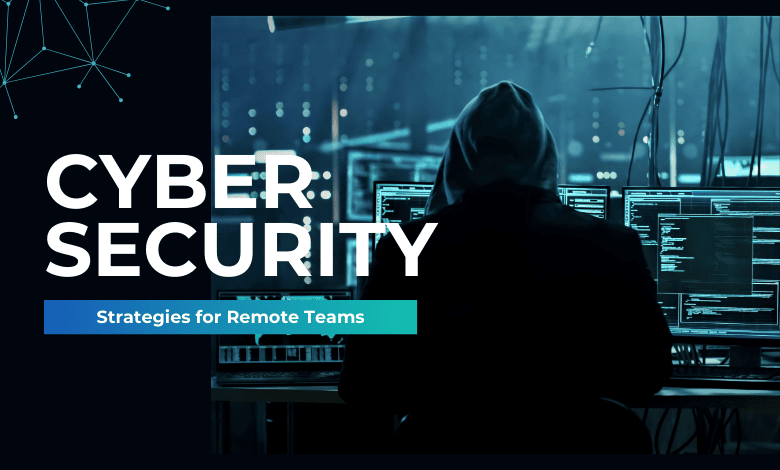Cybersecurity Strategies for Remote Teams

With employees working from various locations, often using personal devices and public networks, remote teams face unique cybersecurity risks. To ensure your team is protected, here are some fresh cybersecurity strategies that go beyond the basics, offering new insights and innovative approaches to keeping your business safe.
1. Encourage Zero Trust Security Models
The traditional perimeter-based security approach, where the office network is considered “safe” and everything outside is “risky,” doesn’t hold up in a remote environment. A Zero Trust security model assumes that no one—whether inside or outside the organization’s network—can be trusted by default. Access to resources should be granted based on verification of identity, and even then, only the minimum necessary access should be provided.
By implementing Zero Trust, you can reduce the risk of internal breaches and ensure that access to critical systems is tightly controlled. This approach can be especially useful when dealing with remote employees who might be accessing systems from multiple locations and devices. For enhanced network security, solutions like the WatchGuard Online M Series Firewalls can provide additional layers of defense against cyber threats targeting remote teams.
2. Adopt Behavioral Analytics to Detect Anomalies
Traditional security methods often rely on signatures or known threats to detect breaches. However, cybercriminals are becoming more sophisticated, using methods that are harder to catch with conventional approaches. By adopting behavioral analytics, you can detect unusual patterns of behavior within your team’s usage of company systems, which can be indicative of a potential cyberattack or a compromised device.
For example, if an employee who typically works in a particular location suddenly accesses the network from a different country, the system might flag this as an anomaly, prompting further investigation. Behavioral analytics provide a proactive layer of defense, allowing you to respond to suspicious activity before it becomes a larger issue.
3. Establish Secure Collaboration Platforms
Remote teams often rely on various collaboration tools—such as video conferencing, instant messaging, and document sharing—to communicate and work together. Unfortunately, these platforms can present security risks if not properly managed. Opt for collaboration tools that offer end-to-end encryption, two-factor authentication (2FA), and robust access controls.
Consider integrating your collaboration platforms with a Single Sign-On (SSO) system, which allows your team to access multiple tools with one secure login. SSO can minimize the risk of password fatigue, reduce the chances of weak passwords, and centralize authentication, making it easier to manage security for various tools.
4. Secure Personal Devices with Mobile Device Management (MDM)
With remote employees using personal devices for work, it’s essential to implement a Mobile Device Management (MDM) solution. MDM software allows your IT team to remotely manage, monitor, and secure mobile devices such as smartphones, tablets, and laptops.
MDM solutions can enforce security policies like strong password requirements, encryption, and remote wiping of data in case a device is lost or stolen.
5. Foster a Cybersecurity Culture with Continuous Training
While one-time training on cybersecurity best practices is beneficial, continuous learning is key to maintaining a security-conscious workforce. Regular, engaging training sessions, along with simulated phishing attacks, can help keep cybersecurity at the forefront of your team’s mind.
Consider implementing gamified training programs or interactive workshops that allow employees to practice identifying threats in a safe environment. By fostering a culture of cybersecurity awareness and encouraging your team to stay up-to-date on the latest threats, you can build a more resilient defense against cyberattacks.
6. Utilize Data Loss Prevention (DLP) Tools
Remote workers often use a variety of devices and networks to access company information, increasing the chances of data leakage. Data Loss Prevention (DLP) tools can help protect sensitive information by monitoring and blocking the transfer of critical data, whether through email, USB drives, or cloud storage.
DLP software allows you to set policies that define what types of data can be shared and who can access it. For instance, it can prevent employees from emailing confidential company documents to their personal accounts or uploading them to unauthorized cloud services. By actively managing how data is handled, you reduce the likelihood of exposing or leaking sensitive information.
7. Plan for Cyber Resilience with an Incident Response Plan
Despite your best efforts, cyberattacks may still happen. That’s why having a comprehensive incident response plan (IRP) in place is important. This plan should include procedures for detecting, responding to, and recovering from security breaches.
The plan should also cover communication strategies to ensure transparency and minimize confusion in the event of a breach. A quick and coordinated response can help limit the impact of an attack and ensure your remote team stays productive during recovery.
Conclusion
Securing remote teams requires a multi-layered approach that goes beyond simple password protection. Adopting strategies like Zero Trust models, behavioral analytics, mobile device management, and secure collaboration tools can create a more robust cybersecurity posture for your remote workforce. Fostering a culture of continuous learning and preparing for potential breaches with a solid incident response plan can further enhance your team’s ability to withstand and recover from cyber threats.






